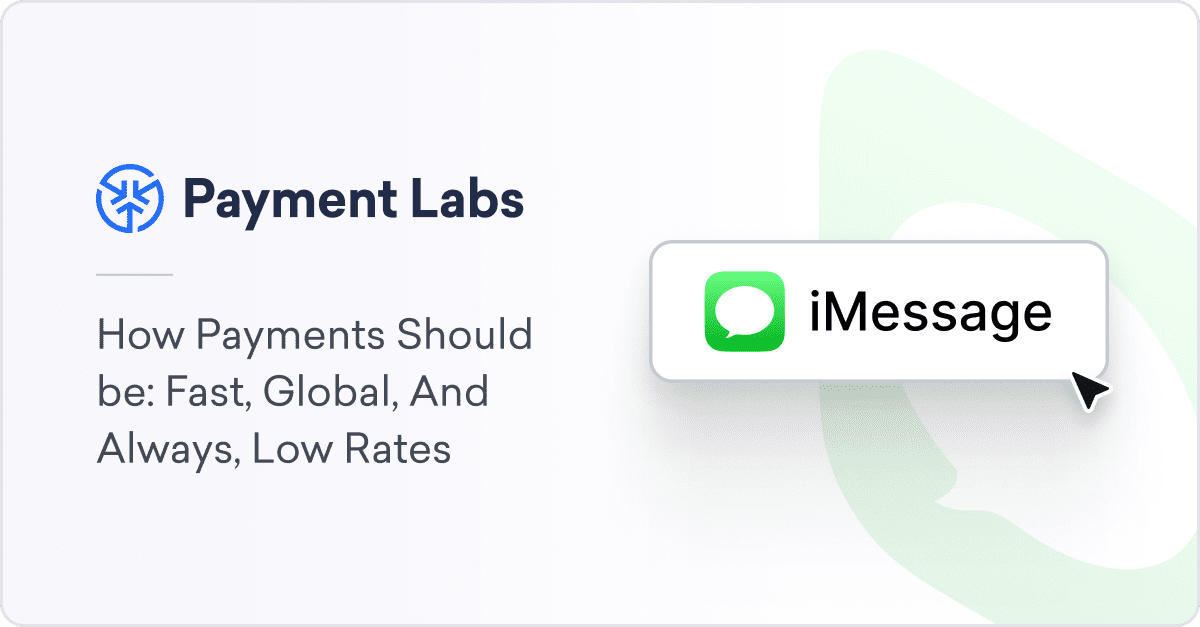Swift Payments vs Local Payment Systems – Cross-Border Transactions Choice Made Simple
It’s a good time to be in business if you need to make a lot of cross-border payments.

It’s a good time to be in business if you need to make a lot of cross-border payments. The global financial infrastructure of today has a wide selection of payment rails you can use to move your money around the world. However, in most cases, international payments come down to a very basic choice.
- Sending a Swift payment. Which means using the Swift messaging network to transfer funds to a financial institution abroad through a direct connection or an intermediary bank in their jurisdiction.
- Using local payment systems for cross-border payments. This may sound counterintuitive, but it simply means that your financial institution keeps your transfer on their accounts in your country and uses their accounts in the recipient’s country to deposit the needed sum locally.
We’re not comparing any two given institutions when we compare using Swift payments and local transfers for cross-border payments. Rather we’re looking into the two biggest ways to send funds abroad in principle and which of them is better for each of your business scenarios.
What is a Swift cross-border transfer?
International payments these days aren’t about physically moving money. They are mostly about accounting and reconciliation communication between institutions. These institutions need a trustworthy messenger to deliver instructions about transactions. And the only system we have that has this much trust and influence is Swift – the one-of-a-kind international collaboration in the financial sector.
Swift payments refer to transfers that happen between institutions within the Swift messaging network. It consists of 11,000+ financial institutions in 200+ countries, which makes Swift an industry giant with a unique reach and role in the cross-border payments infrastructure.
Swift develops global payment standards and provides a messaging platform that financial institutions use as an instruction relay for all money communications. Swift is an interface everybody knows, and the MT-103 Swift messages are instantly compliant with international financial regulations.
How to make a Swift cross-border transfer
- You initiate a payment online or in the branch, and the money is deducted from your account.
- Your financial institution sends a standardized Swift message directly to the recipient’s bank or through intermediaries.
- The recipient’s bank reviews this payment order, and once it passes their compliance, they deposit the money you sent.
Pros of using Swift for cross-border payments
Swift is turning 50 in 2025, but it hasn’t made it any less competitive. On the contrary, Swift leverages its enormous reach, ownership of globally accepted standards, and recent innovations to remain the go-to choice for the bulk of all above-board international transactions.
- Trust in the institution – Swift has been a cornerstone of international finance since the 70s, and this is largely due to the combined trust of the central banks of G10 countries and the EU who control it.
- The power of inertia – many traditional financial institutions prefer to stay on the cautious side in terms of technology and regulations. A proven tool like Swift that keeps rolling out innovative updates is more than enough for many business cases. And even within SwiftNet, the Swift MX standard (ISO 20022) succeeded the Swift MT standard in 1999. Yet it’s only becoming the default for the Swift network in November 2025 because of how slowly financial institutions change when they don’t have to.
- The enormous reach of the Swift network is unbeatable. With over 11,000 participants, you, as a financial institution, can pretty much deposit money anywhere your clients may need you to, directly or through intermediaries.
- International standards and regulations – everyone dreads compliance, and everyone knows how to work with Swift messages which are the codified standard for the industry. Many businesses prefer to pay extra transfer fees to cut the added expenses on regulatory compliance.
- Continued innovation – Swift has to innovate to remain on top of their highly competitive space. As a direct response to criticism of transparency and speed of payments, the company presented Swift GPI, which addressed these challenges and more.
Cons of using Swift for cross-border payments
Yes, Swift has reach but direct access to 200+ countries is not top of the wishlist for every business. So if you need to make instant and cheap payments to one or two specific countries, maybe Swift isn’t the optimal solution. Here are the factors business owners refer to most often that turn them off using Swift.
- Swift transfer costs – Swift transfers can get costly, especially if it’s a smaller transaction that gets sending, receiving, intermediary bank fees, and the currency exchange rate markup. You can check the specific costs that your Swift transfers with your financial institution, but let’s just say it makes more sense to use Swift for large cross-border payments.
- Speed of Swift payments – according to Swift, 89% of their cross-border payments are processed within an hour. This leaves at least 11%, which can take up to several days if the payment is going through multiple intermediary banks.
- Accessibility of the Swift network – if you are a financial institution that wants to join the Swift network, you will have to comply with the organization’s comprehensive compliance sheet. Which, however, guarantees the quality of financial institutions who work in the network.
- Transparency of the Swift network – even though you can use Swift GPI to have a constant view of the payment’s status, financial institutions, and business owners often raise concerns about the unpredictable fees and funds delivery time estimates.
Business scenarios to use Swift payments in
Swift is one of the old-time giants that still remains the cornerstone of international finance. And there are many business cases where Swift payments are just the financial tool to use. But the main reasons to use Swift are these:
- It’s important for you to be able to operate in numerous countries in a completely standardized manner.
- You operate large transactions that may be hard to transfer via local payment systems.
- Your B2B transactions require detailed transaction information in compliance with international and local standards and regulations.
Need some more Swift insight? Here’s our in-depth article with all the answers.
What Is Swift – All You Need to Know about the Manhattan Project of Global Payments
Local payment systems for cross-border payments
Governments and central banks manage money within a country through local networks and systems called payment rails. Money flows through the economy along these routes, and consumers rely on banks, fintechs, and other financial institutions to create an infrastructure to use these payment rails.
What is a cross-border transfer using local payment systems?
When you use a platform like Wise or Revolut to send money to another country, they keep your currency inside your jurisdiction and pay the recipient abroad from the account in their local bank.
Fintech payment providers use this as an alternative to Swift transfers to avoid delays, extra fees, and unfavorable currency exchange rates. Money flows counterbalance themselves, and funds don’t need to cross the border.
Pros of using a fintech-enabled local payment system for cross-border payments
- Speed and efficiency of transactions – whenever funds don’t cross a border, you are saving time and money.
- Transaction cost – using local payment systems minimizes transfer costs, especially compared to traditional bank transfers.
- Tailor-fit payment solutions – for example, at Payment Labs, we’re creating a dedicated payment system for esports prize payments, sports payments, NIL payouts, and agencies that simplify fast and compliant global payments with low, flat-rate fees.
- Experience & innovation speed – the competition in the local payments niche is immense so providers continue to innovate and improve user experience as well as lower the overall cost of these payment methods.
Cons of using a fintech-enabled local payment system for cross-border payments
Local payment systems, unfortunately, aren’t a silver bullet. And here are some of the limitations compensating for the speed and convenience we went over before.
- Smaller international reach and interoperability – while constantly improving and expanding, FinTechs can run into issues transferring funds into some less developed countries or financial institutions.
- Transaction size limitations – it is common for fintech platforms to have quite restrictive limitations about the transaction types and sizes you can make.
- Trust and reliability – customers in some countries and from more conservative business verticals may still view payment options without a MT-103 Swift receipt as less reliable.
Business scenarios to use local payment systems for cross-border transfers
Same as Swift transfers, local payment systems have a large role to play in the current international finance ecosystem. Here are some of the most common scenarios they are used in today.
- You’re a small to mid-size business that does regular smaller value transfers to product or service providers.
- You don’t need to exceed the international transaction limit of the local systems.
- International payroll is often managed through local transfers to improve predictability and lower fees on payments to international employees or contractors.
- You need to work with local payment methods and receive recurring international transfers from abroad.
Swift vs local payments – making an informed choice for your business
Swift versus local payments isn’t a question you answer just once. As a business owner, you face it every time there’s a cross-border payment to make. Upmarket users often prefer Swift, but everyone loves local payments for speed, so as always, the answer depends on the wider context.
Of course someday we’ll get a best-of-both-worlds solution that beats Swift’s vast reach and trust and allows simple work with money like fintech solutions do. But until then, you have perfectly capable systems to handle any kind of cross-border transactions. Wise, PayPal or Revolut for a local transfer, your bank for a Swift transfer, or Payment Labs to handle all of your payment automation.
Reach out to the Payment Labs team today to effortlessly manage your cross-border payments!




